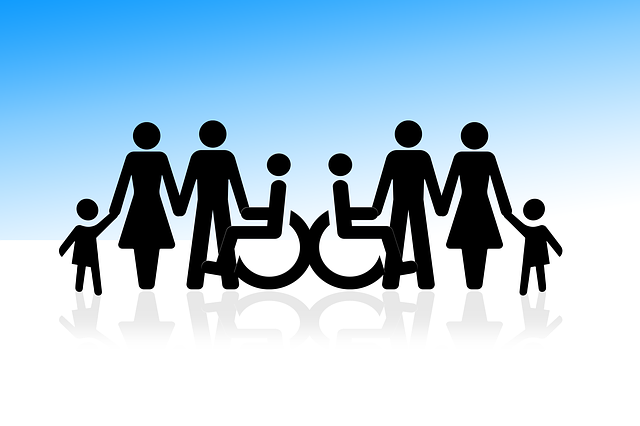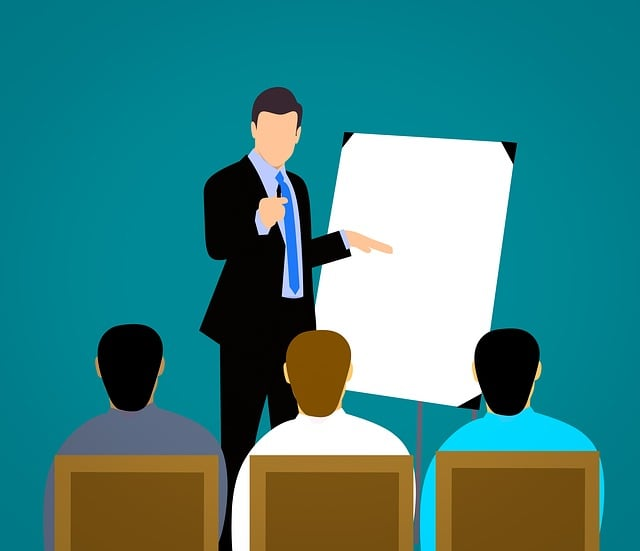- Accessibility services create an inclusive work environment for every Canadian, disabled or otherwise, across Canada.
- Accessibility professionals strive to raise awareness, build skills, and promote disability inclusion in the workplace.
- Complying with accessibility legislation enables organizations to foster equal opportunities for people with disabilities.
Short Summary
- Accessibility services create an inclusive work environment for every Canadian, disabled or otherwise, across Canada.
- Accessibility professionals strive to raise awareness, build skills, and promote disability inclusion in the workplace.
- Complying with accessibility legislation enables organizations to foster equal opportunities for people with disabilities.
- Understanding Accessibility Services
- Essential Components of an Accessibility Strategy
- Empowering Accessibility Professionals
- Non-visible Disabilities vs. Visible Disabilities
- Disability Awareness and Inclusion in the Workplace
- Accessible Built Environment
- Online and Digital Accessibility
- Tailored Accessibility Training Programs
- Accessibility Legislation and Compliance
- Accessibility Professionals Job Descriptions
- About ESG: The Report!
- Summary
- Frequently Asked Questions
- Understanding Accessibility Services
- Essential Components of an Accessibility Strategy
- Empowering Accessibility Professionals
- Non-visible Disabilities vs. Visible Disabilities
- Disability Awareness and Inclusion in the Workplace
- Accessible Built Environment
- Online and Digital Accessibility
- Tailored Accessibility Training Programs
- Accessibility Legislation and Compliance
- Accessibility Professionals Job Descriptions
- About ESG: The Report!
- Summary
- Frequently Asked Questions
Understanding Accessibility Services

Accessibility services are the driving force behind creating inclusive environments for everyone. These services help to remove barriers and ensure that everyone can reach their full potential, regardless of their abilities or disabilities.
Accessibility services are a tremendous, transformative resource designed to ensure that everyone, regardless of their physical or cognitive abilities, can fully engage with the world around them. They’re the tools and technologies that break down barriers and open doors, making it possible for everyone to participate fully in everyday life and work. Whether it’s a screen reader for the visually impaired, captioning services for the hearing impaired, or software that makes digital content more navigable for people with cognitive challenges, accessibility services are changing lives for people you know, every day.
By committing to accessibility and disability inclusion, you are not only complying with accessibility legislation but also fostering a more inclusive and diverse workplace culture.
Essential Components of an Accessibility Strategy

Creating an effective accessibility strategy involves several key elements. One crucial aspect is engaging and co-designing solutions with persons with disabilities, ensuring that their needs and perspectives are taken into account. Offering mentorship and career development opportunities, as well as providing reasonable accommodations, are essential in supporting the recruitment, retention, and promotion of persons with disabilities.
Moreover, the built environment plays a significant role in promoting accessibility. Proactive steps should be taken to ensure physical spaces are accessible. These might include: providing accessible entrances, exits, pathways, restrooms, and elevators. Additionally, designing information and user interface components to be perceivable, operable, understandable, and robust is another essential aspect of an accessibility strategy. By addressing these components, organizations can ensure a comprehensive and effective approach to accessibility.
Empowering Accessibility Professionals

Accessibility professionals are champions of inclusion, working tirelessly to ensure that everyone has access to the same resources and opportunities. They contribute to creating an atmosphere where everyone is respected and valued, regardless of their abilities or disabilities. These professionals possess a diverse range of expertise, from human resources management to web development to architecture, enabling them to create a more accessible world for all.
By raising awareness and building skills related to accessibility, accessibility professionals can make a significant difference. They support other roles in the organization, emphasizing that accessibility is everyone’s responsibility. By doing so, they foster a more inclusive environment, empowering people with disabilities to achieve their goals and dreams.
Non-visible Disabilities vs. Visible Disabilities

Understanding the distinctions between non-visible and visible disabilities is crucial when promoting inclusion. Non-visible disabilities may encompass mental health disorders, learning difficulties, and chronic health conditions, and are not readily apparent to others. On the other hand, visible disabilities can be easily observed, such as mobility impairments or the use of assistive devices.
Both non-visible and visible disabilities present unique challenges. People with non-visible disabilities may struggle to receive the necessary diagnosis and support and often face a lack of understanding and empathy from others. Those with visible disabilities may encounter discrimination, stigma, and physical barriers to accessing services and support.
By recognizing and addressing these challenges, we can create a more inclusive world for everyone.
Disability Awareness and Inclusion in the Workplace

Disability awareness and inclusion play a pivotal role in shaping workplace culture. By fostering an inclusive environment, organizations can promote fairness, justice, and a sense of belonging, creating a respectful atmosphere for all individuals. A key aspect of promoting disability awareness and inclusion in the workplace is offering Disability Awareness Training seminars, which provide valuable information on disability, inclusive language, and etiquette.
By participating in these seminars, organizations can ensure that employees are aware of the importance of diversity, equity, and inclusion (DEI) and know how to create an inclusive workplace. This proactive approach not only promotes a more positive work environment but also demonstrates a commitment to accessibility and inclusion.
What is Diversity, Equity, and Inclusion (DEI)
Diversity, equity, and inclusion (DEI) are the three values that many organizations strive to embody to create a more equitable and inclusive society. DEI encompasses people of different ages, races, ethnicities, abilities, disabilities, genders, religions, cultures, and sexual orientations. By fostering a society that values everyone’s unique qualities, DEI promotes respect and appreciation for all individuals.
Organizations that prioritize DEI benefit from a more diverse and inclusive workplace, resulting in better decision-making, increased productivity, and improved customer service. To demonstrate their commitment to DEI, organizations can provide accessible services and products, cultivate a workplace culture that respects all individuals, and offer equal opportunities for all employees.
Accessible Built Environment

An accessible built environment is essential in fostering disability inclusion. It involves designing spaces that are inclusive and user-friendly for everyone, including people with disabilities. By removing and preventing potential barriers in the design of buildings and building sites, accessible built environments ensure that everyone can access the same services and opportunities.
Creating accessible built environments can have a profoundly positive effect on individuals with disabilities, granting them the same access to buildings and services as everyone else. This fosters a sense of inclusion, independence, and empowerment, all of which are invaluable for people with disabilities to thrive in today’s world.
Online and Digital Accessibility
Online and digital accessibility is a vibrant and exciting field that’s transforming the world we live in. Essentially, it’s all about making digital content accessible to everyone, regardless of their abilities or disabilities. It ensures that websites, tools, and technologies are designed and developed in such a way that all users, including those with impairments, can freely navigate, understand, contribute to, and interact with the internet. Embracing digital accessibility isn’t just about checking a compliance box. It’s a golden opportunity to open up your digital doors to a wider audience, to be inclusive, and to champion equality on the World Wide Web. Isn’t it time we all got on board?
Tailored Accessibility Training Programs

Tailored accessibility training programs offer a unique opportunity for organizations and individuals to enhance their knowledge and skills in accessibility. These customized training programs are designed to help create accessible products, services, or websites by focusing on specific needs and requirements. By offering personalized content and support, tailored accessibility training programs ensure that participants get the most out of their learning experience.
Organizations that invest in tailored accessibility training programs not only comply with accessibility laws and regulations but also foster a more inclusive and diverse workplace culture. By providing employees with the necessary knowledge and skills to create accessible products and services, organizations can better serve their customers and demonstrate their commitment to accessibility and inclusion.
Accessibility Legislation and Compliance

Accessibility legislation and compliance are all about identifying, removing, and preventing barriers for people with disabilities. Organizations can ensure compliance by adhering to the accessibility standards set out in their provincial and territorial acts, proactively identifying, removing, and preventing barriers for people with disabilities. By following these standards, organizations can promote equal access to opportunities and contribute to a more inclusive society.
Alberta – British Columbia – Manitoba – New Brunswick – Newfoundland/Labrador – Nova Scotia – Nunavut – Northwest Territories – Ontario – Prince Edward Island – Quebec – Saskatchewan – Yukon – Canada
Accessibility Professionals Job Descriptions
Accessibility professionals play a pivotal role in promoting inclusion by ensuring that their organization is accessible to all users. As the world becomes increasingly dependent on technology, the need for accessibility professionals has never been greater. Below are short descriptions of various accessibility professional jobs that can make a huge impact in the workplace.
Manager: Accessibility managers are responsible for ensuring that their organization’s products and services are designed with accessibility in mind. They create and enforce policies that help ensure compliance with accessibility standards across all areas of the organization.
Procurement Specialist: A procurement specialist ensures that all products and services purchased by the organization meet accessibility guidelines and standards. They work with vendors to ensure their products meet requirements and negotiate contracts to ensure accessibility is prioritized.
Communications specialist: Communication specialists are responsible for getting the word out. This includes accessibility initiatives within the organization and out to the public. They create and distribute materials that promote accessibility best practices and help raise awareness about the importance of accessibility.
Business analyst: Business analysts help ensure that accessibility is incorporated into the organization’s overall business strategies. They analyze data to identify areas of improvement and make recommendations to ensure accessibility is a top priority.
Information architect: Information architects are responsible for organizing and structuring content so that it is easy to navigate and find. They help ensure that all digital content is accessible to all users, regardless of disabilities.
Architect: Accessibility architects design and supervise the construction of spaces to ensure they are fully accessible to people with disabilities. They work closely with builders to ensure that accessibility is incorporated into the building process.
User researcher: User researchers help organizations better understand the needs of users with disabilities. They conduct research and gather data to identify the barriers that people face when using products and services. They also make recommendations to ensure accessibility is prioritized.
Designer: Accessibility designers create accessible user interfaces (UI) and user experiences (UX) that accommodate all users. They create designs that are easy to navigate and intuitive for everyone.
Developer: Accessibility developers write code that is accessible to everyone, including people with disabilities. They ensure that all digital content, including websites and applications, conforms to accessibility standards and guidelines.
And more job descriptions…
Content creator: Content creators produce digital media that is accessible to everyone. They create videos, podcasts, and other digital media that include transcripts and captions to ensure that all users can access the information.
Quality assurance (QA) specialist: Quality assurance specialists test products and services to ensure they meet accessibility standards and guidelines. They work with developers and designers to ensure that any issues are identified and resolved before products are launched.
Accessibility specialist: Accessibility specialists are experts in accessibility standards and guidelines. They ensure that all products and services meet these guidelines and that accessibility is a core consideration throughout the entire development process.
IT Accommodations Specialist: IT accommodations specialists work with employees with disabilities to ensure that they have the tools and accommodations they need to succeed in the workplace. They provide and manage assistive technology and software and help ensure accessibility in the workplace.
Accessible Media Specialist: Accessible media specialists create digital media that is accessible to everyone, including those with disabilities. They ensure that all digital media contains captions and audio descriptions as well as other accessibility features.
Policy and standards specialist: Policy and standards specialists develop and enforce accessibility policies and guidelines. They help ensure that all products and services are accessible to everyone and that accessibility is a core consideration across all aspects of the organization.
Policy creator: Policy creators are responsible for developing and writing accessibility policies and guidelines. They ensure that these policies are in alignment with accessibility standards and that they are followed across the organization.
Research & development (R&D) specialist: R&D specialists conduct research to identify new and innovative ways to improve accessibility. They work with developers and designers to create new technology and software that is accessible to all users.
Regulatory compliance specialist: Regulatory compliance specialists ensure that products and services are compliant with all relevant accessibility regulations and laws. They work with regulatory agencies to ensure that all accessibility requirements are met.
Human resources: Human resources specialists help ensure that employees with disabilities are included and accommodated in the workplace. They provide support and resources to employees with disabilities and work with managers to ensure accommodation needs are met.
Customer service specialist: Customer service specialists ensure that all customers, including those with disabilities, are able to access the products and services offered by the organization. They work with customers to identify any accessibility barriers and help find solutions to ensure accessibility.
Instructor: Instructors provide training and education on accessibility best practices to ensure that all employees are aware of the importance of accessibility. They work with managers and employees to ensure that accessibility is incorporated into all aspects of the organization.
About ESG: The Report!
ESG: The Report! is an online platform dedicated to promoting sustainable development and responsible investment practices. By focusing on environmental, social, and governance (ESG) principles, ESG: The Report! strives to create a more sustainable future by helping investors and businesses transition to a sustainable business model.
Summary
Throughout this blog post, we have explored the importance of accessibility services. It has included the role of accessibility professionals and the various resources and legislation that support inclusion. By embracing accessibility and inclusion, we can create a world where everyone has the opportunity to participate and thrive. Let’s continue to unlock accessibility services for everyone in 2023 and beyond.

Frequently Asked Questions
What is the meaning of accessibility of services?
Accessible services enable individuals with disabilities to engage with the world. Making sure your services are accessible is key to reaching more people.
What is the accessibility plan in Canada?
The Accessibility Plan in Canada is centered around the 7 key priority areas. They are outlined in the Act, with the goal of building a barrier-free Canada by January 1, 2040. It involves identifying, removing, and preventing barriers, with Accessibility Standards Canada publishing an updated Accessibility Plan every three years.
What falls under accessibility?
Accessibility encompasses the design of products, services, and environments to be accessible to people with disabilities. In turn, this allows them to fully participate in their communities.
This includes the design of physical spaces, digital products, and services that are usable by people with disabilities. It also includes the development of policies and procedures that ensure people with disabilities have equal access to opportunities.
What is the main goal of accessibility services?
The goal of accessibility services is to ensure everyone can reach their full potential by removing barriers and creating inclusive environments.
Others have also read…
WCAG 2.0 Web Accessibility Guidelines
What is the Canadian Index of Wellbeing?
How to Eliminate Accessibility Barriers Online
What is CPACC to Disability and Accessibility in Canada?

Dean Emerick is a curator on sustainability issues with ESG The Report, an online resource for SMEs and Investment professionals focusing on ESG principles. Their primary goal is to help middle-market companies automate Impact Reporting with ESG Software. Leveraging the power of AI, machine learning, and AWS to transition to a sustainable business model. Serving clients in the United States, Canada, UK, Europe, and the global community. If you want to get started, don’t forget to Get the Checklist! ✅
